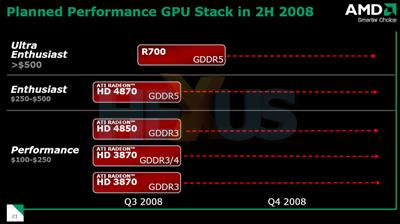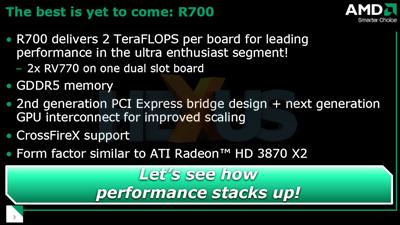NVIDIA's response
So, at time of launch, we had the 4850 priced at $199 and the 4870 at $299, both threatening to outperform anything NVIDIA had at those prices. As the interview with John Byrne showed, NVIDIA reacted by dropping the price of its 9800 GTX to $199 where it should give the 4850 a good run for its money in the price/performance battle.
Perhaps its more significant riposte, however, is the imminent launch of the 9800 GTX+. This is NVIDIA’s first GPU to use the 55nm process and should offer a significant performance advantage over the 4850 for only $30 more.
So NVIDIA has responded well to this significant challenge from AMD, but this does leave it with a bit of a gap in its portfolio. The next GPU up from the 9800 GTX+ is the newly released GTX 260, priced at $399. So that leaves a whopping $170 gap in its range, which AMD is sure to exploit with the 4870. Furthermore, the 9800 GTX+ isn’t due out for another few weeks, so that gives AMD a one month head start with the 4850.
The final clever part of AMD’s strategy is scalability – the ability to put two GPUs on one card. The next generation equivalent is known only by its codename for now – R700 – but seems set to effectively feature two 4870s on one PCB.
The key thing will be how it compares to the current performance leader: NVIDIA’s GTX 280. AMD believes it will win this and isn’t hard to believe when you take a look at two 4870s in crossfire. Furthermore, NVIDIA is not expected to double up any of its latest generation of GPUs due to their size and the amount of heat they produce.
So there you have it: AMD’s new GPU strategy. On paper, at least, and without factoring in NVIDIA’s currently superior developer relations, AMD appears to have NVIDIA’s number with this one. Of course NVIDIA will redouble its efforts and we can expect a strong response with its next generation of GPUs. But that will take time and until then it looks like it will be in the unfamiliar position of playing second fiddle to AMD/ATI.















